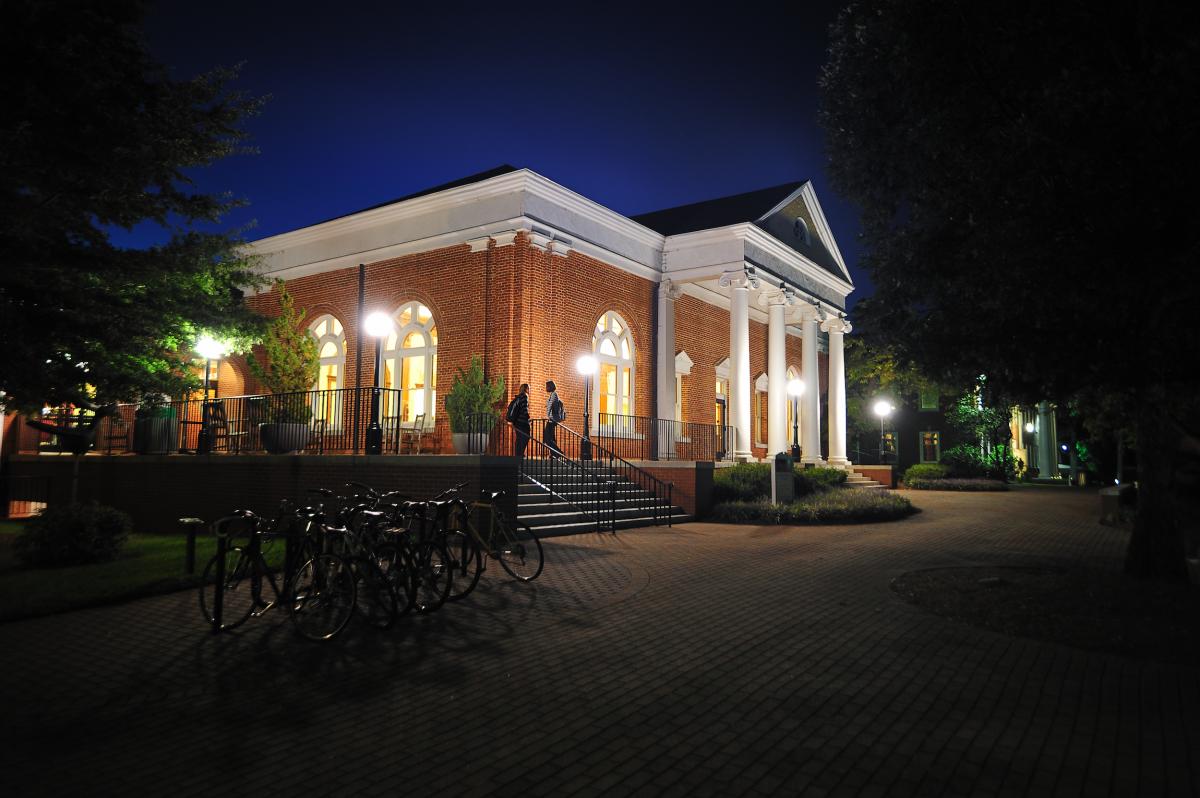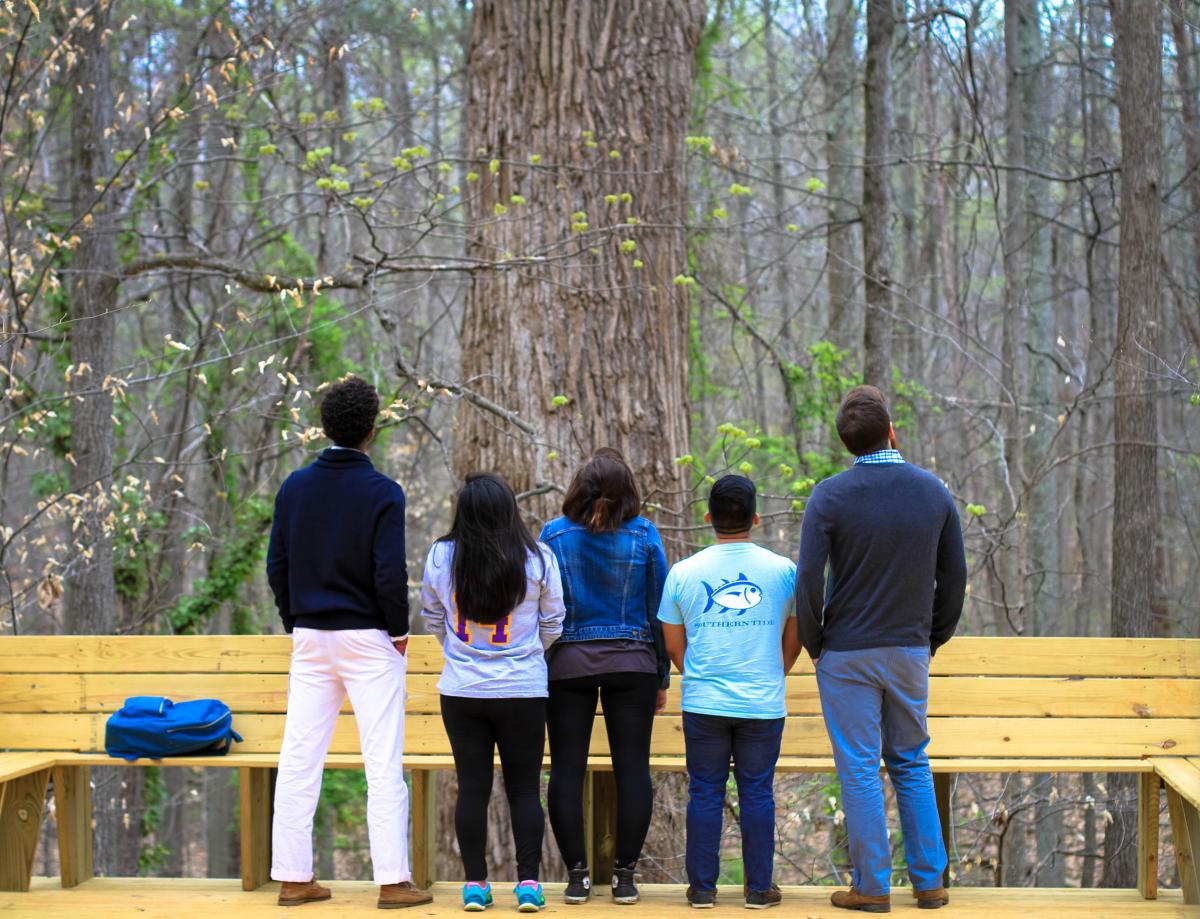Guilford College faculty, staff, and students will come together in Greensboro this afternoon for a Unity March in response to the events in Charlottesville, Virginia. They'll leave from Founders Hall, and follow a newly constructed trail that brings people face-to-face with a living monument. It's a 300-year-old tulip poplar known as the Underground Railroad Tree that marks the spot where thousands of slaves once began their long journey to freedom.
Today that tree and the surrounding New Garden wooded area play educational roles for students of all ages and the general public. It's part of the National Park Service's Network to Freedom program.
Director of Community Learning James Shields leads tours on campus.
Interview highlights
On the early days of the Underground Railroad:
As long as there's been enslavement, there were people seeking freedom, and there were people who were willing to help them along the way. Some say the Underground Railroad term was coined by slave catchers. There's the story of the slave catcher who was chasing some enslaved Africans, and all of the sudden they just disappeared. He said, ‘They just disappeared, as if they were on an underground railroad.'
On the Quakers and their role in the Underground Railroad:
Quakers moved to the Piedmont around 1745. Many came from Massachusetts, and they were fiercely anti-slavery abolitionists. By 1778, all Friends were forbidden to own or buy slaves. So, you had people like the Levi Coffin family, whose family farm was what is now our [Guilford College] campus. We know that enslaved Africans seeking freedom from around the area understood that, 'If I could just get to New Garden, I know that those Quakers will help me.'

Hege Library houses the Friends Historical Collection - designed by the Network to Freedom as a NTF Research Facility. (Photo Credit: Roger Sommer)
On the 300-year-old plus tulip poplar tree and surrounding area:
The New Garden area, we believe, is the southernmost terminus of the Underground Railroad. The tree sits smack in the middle of our woods. We know this tree was a witness to what went on because of the writings of Levi Coffin. One of the stories that he tells is going out to the woods with food under the guise of feeding the pigs, because they would let the pigs run free in the woods. But, he was really taking food, clothing, and information to enslaved Africans seeking freedom who came to that tree. It was mainly huge trees like the tulip poplar and a lot of thickets, and so, the enslaved Africans would come, and during the day they would hide in those thickets.

On misconceptions surrounding the Underground Railroad:
One misconception is that it was mainly enslaved Africans and good-hearted white people. But there are so many stories about enslaved Africans and freed blacks who worked together where you never saw a white face, or people used their ingenuity, like Henry “Box” Brown, or William and Ellen Craft, or Harriet Tubman and Frederick Douglass. Both of those folks escaped on their own with little or no help from white people. You don't hear a lot about the role of enslaved Africans like Hamilton Saw who stayed behind, and instead of freeing himself, he worked with the Coffins in order to free others.
James Shields leads Underground Railroad tours by appointment Monday through Friday. Docent training begins in the fall to meet the rising demand for tours. An online curriculum for public school students is also currently under development.
The Unity March gathering will begin at 4:00 pm. James Shields will speak on the legacy of the Underground Railroad Tree and its relevance to the recent Charlottesville events.
300x250 Ad
300x250 Ad
